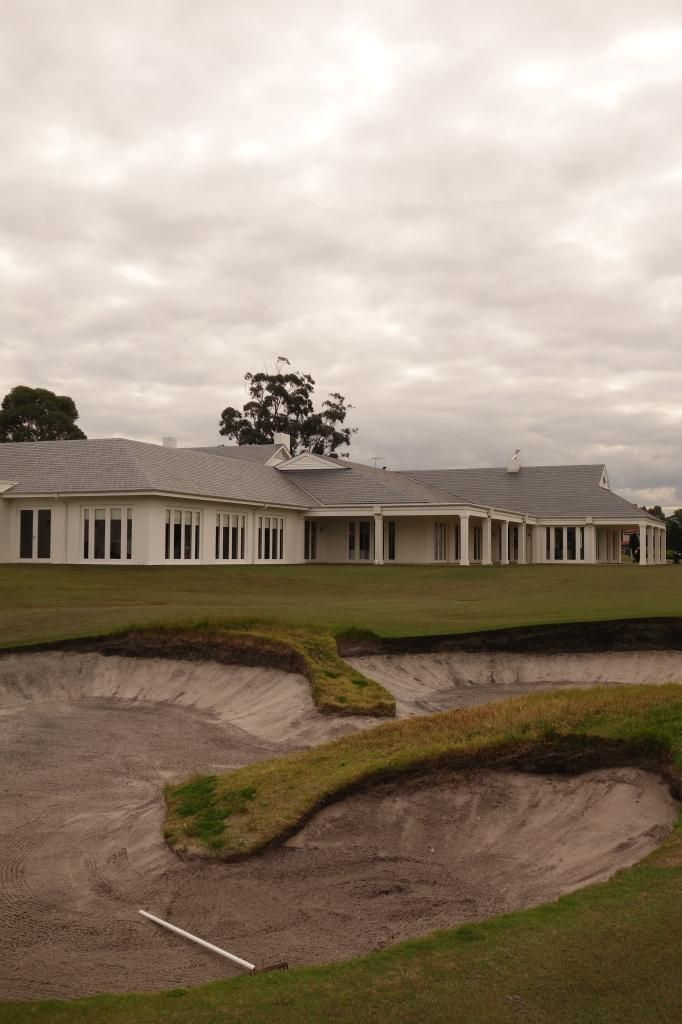Kingston Heath was so much fun the first time, we managed to play it again before we left. Despite having also played Royal Melbourne (West), Royal Melbourne (East), Victoria, and Metropolitan, Kingston was our only double play. That, alone, is telling. Many thanks to the staff for accommodating our request, especially at a reduced rate.
As I've noted, I'm still very much on the fence (in the unreality that occupies my golf mind) about whether I'd choose Kingston or Victoria if I could join a club for regular play in the Sandbelt. When I was there, Kingston came out ahead after much debate. Now, after the responses to my Victoria thread, I'm again having trouble choosing. I still lean Kingston, but that's a tribute to the course more than to the club. As much as I like the clubhouse at Kingston (and even though the pro shop is far superior to the one at Victoria, which is the worst of any of the clubs we visited), it's very much an afterthought. Kingston is all about the golf, and you get that impression immediately, as the "entry" to the clubhouse is actually an open walkway that leads directly to the first tee. Once you make it to the end of the walkway, an amazing expanse of golfing land opens before you--the first hole straight ahead, the sixth hole running parallel, in the opposite direction, to the right of the first, the warm-up driving range to the left of the first, the seventh and eighteenth holes to your right, and the third and fourth at approximately two o'clock. Flatness has never looked so enchanting.
A few general comments about the course before I get to the photo tour. The famed par-3 15th hole was closed for play during both of my rounds, so I can't comment on it. I walked it and shook my head at the dastardly bunkering by the green, but I didn't feel I missed much. That's how good the rest of the course is. People say the 15th is by far the best individual golf hole at Kingston, and given that the other par-3s all play along flat ground and that none of the other holes have any "wow" factor to speak of, that might well be true. But Kingston still has other standout holes; they are just overlooked because of what could be one of the greatest, and most intimate, course routings in the world (enhanced by the near-total absence of views of the outside world, with the minor exceptions of the left of 12 and the left of 16). In my opinion, the following holes are all legitimately world class: 1, 3 (albeit with one of the worst/blandest/least-strategic tee shots on the course), 5, 9, 10, 12, 14, 15, 16, 17, 19 (which we played as the second hole--it's between the first green and the tee of the normal second hole). The 10th has to be the best par-3 after the 15th. It's short, gorgeous, and incredibly difficult. Even though it took me two playings to figure this out, the miss is short or long. Given how narrow the green is, any miss a few feet on either side means some adventures from the bunkers. I generally played well out of the bunkers at Kingston, but 10 ate me alive, as the narrowness of the green and the hardness of the bunkers meant I visited bunkers on each side of the green on consecutive shots both times I played it.
Despite being a very flat piece of land (the uphill 15th hole has by far the most elevation of any on the course), Kingston is blessed with wonderful natural undulations, including several large enough to create enticing blind shots throughout the course: the tee shots on 1 and 6 (both playing slightly uphill over the same ridge in opposite directions), the tee shot on 8 (uphill over a ridge), the second shot on 14 (up a gradual hill), the tee shot on 16 (uphill over a ridge, turning hard right), the second shot on 17 (downhill over an Alps-like rise in the second half of the fairway). Bunkers are absolutely everywhere and in large numbers--often in large clusters--but they have less sand in them than any of the other bunkers on the Sandbelt (at least of the courses I played). The greens are very fast, so subtle ridges, and there are many of them, propel balls away from the hole more than you might think. It's a course that commands your attention on every shot (the flatness--and lack of Metropolitan-like playing corridors--makes many of the landing areas on the tee shots hard to see, even if they are generous), but yet is not so hard as to wear you down. In fact, it's just about the most pleasant walk in all of golf.
N.B.: My pictures are largely from our first round at Kingston, when it was mostly sunny, but I have also included several from our second round, when it was mostly cloudy.
Love at First Sight (View Through the Open-Air Walkway to Hole 1 and the Course)
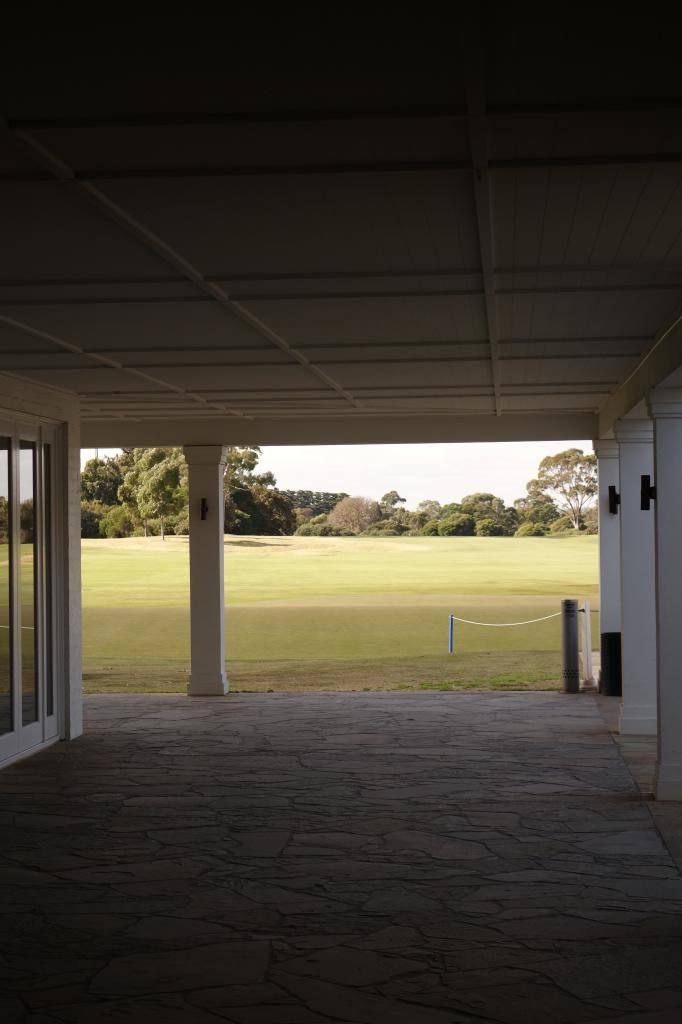
Clubhouse View (1st Hole to the Left, 6th Green to the Right)
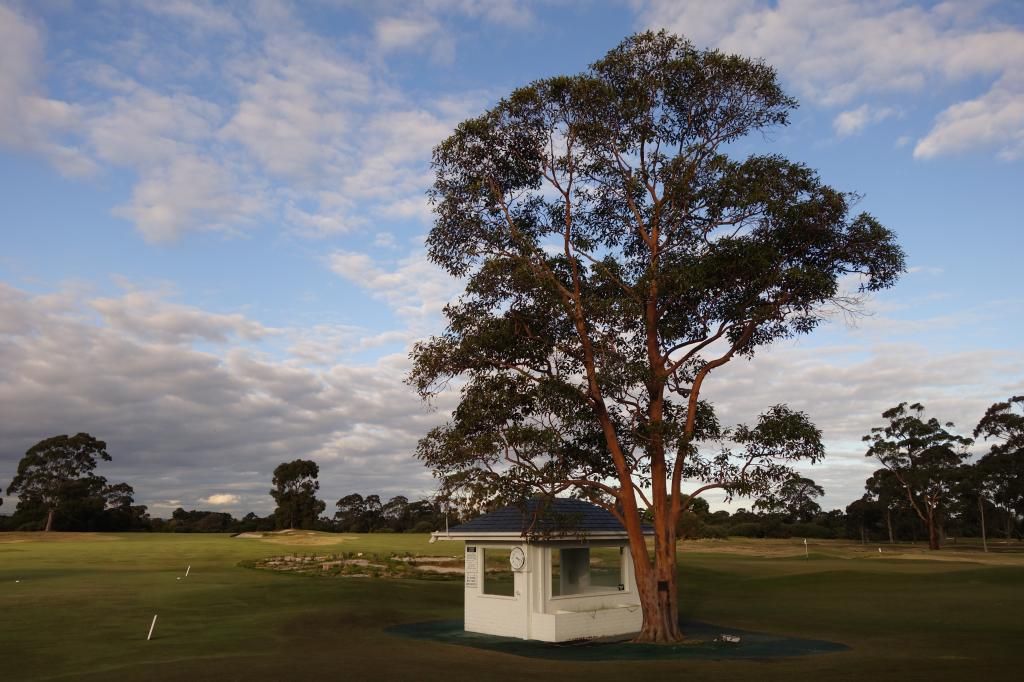
Hole 1 (Tee) (My favorite opening hole and tee shot on the Sandbelt)
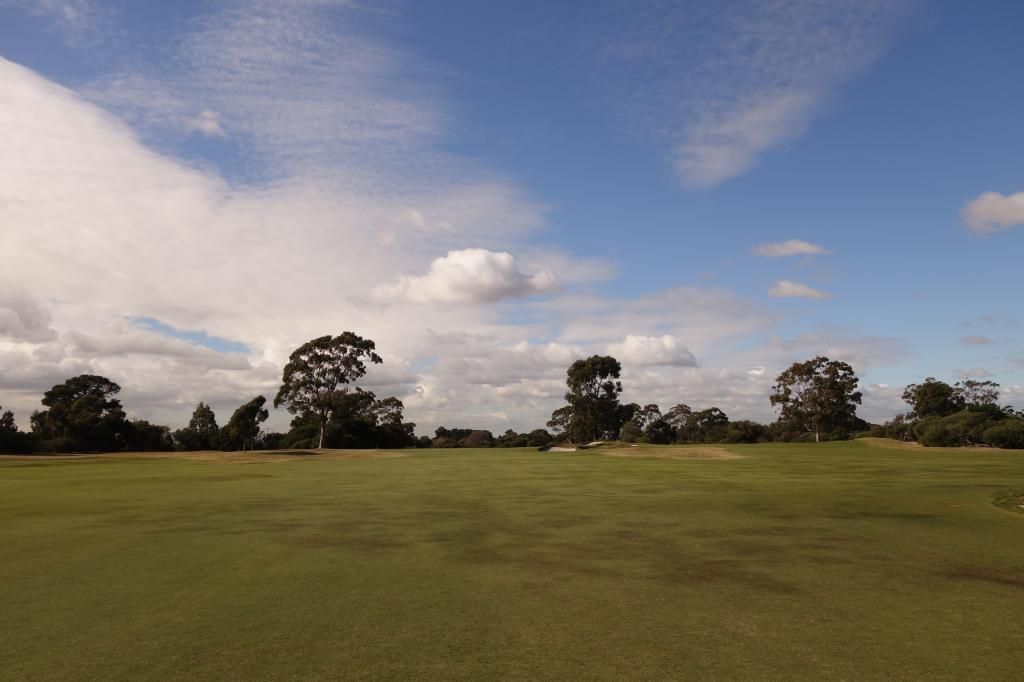
Hole 1 (Right Fairway Bunkers)
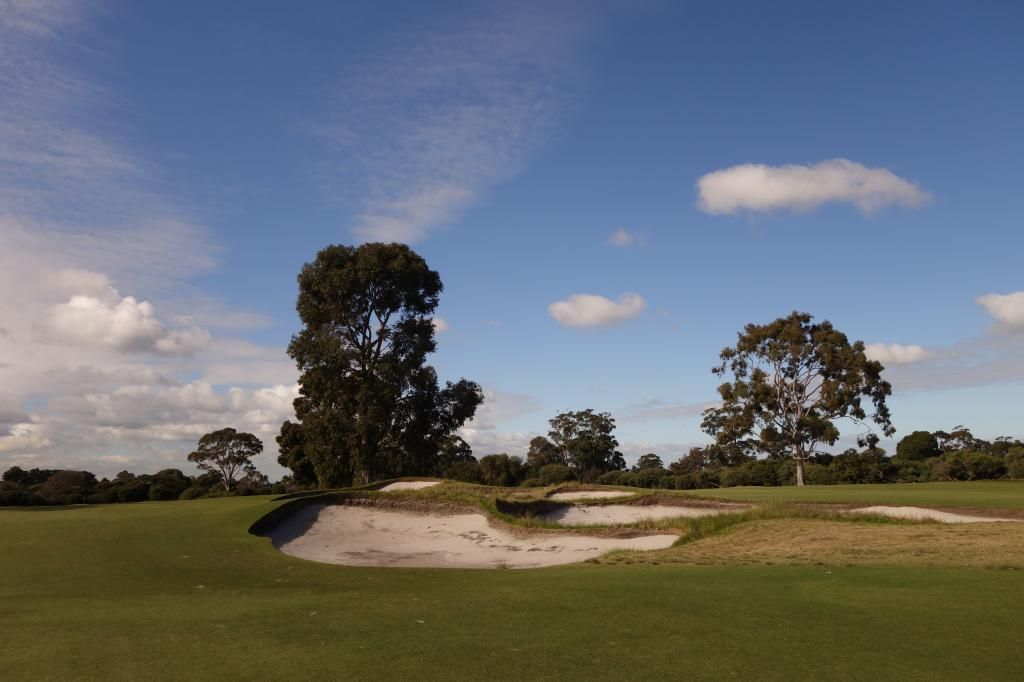
Hole 1 (Fairway)
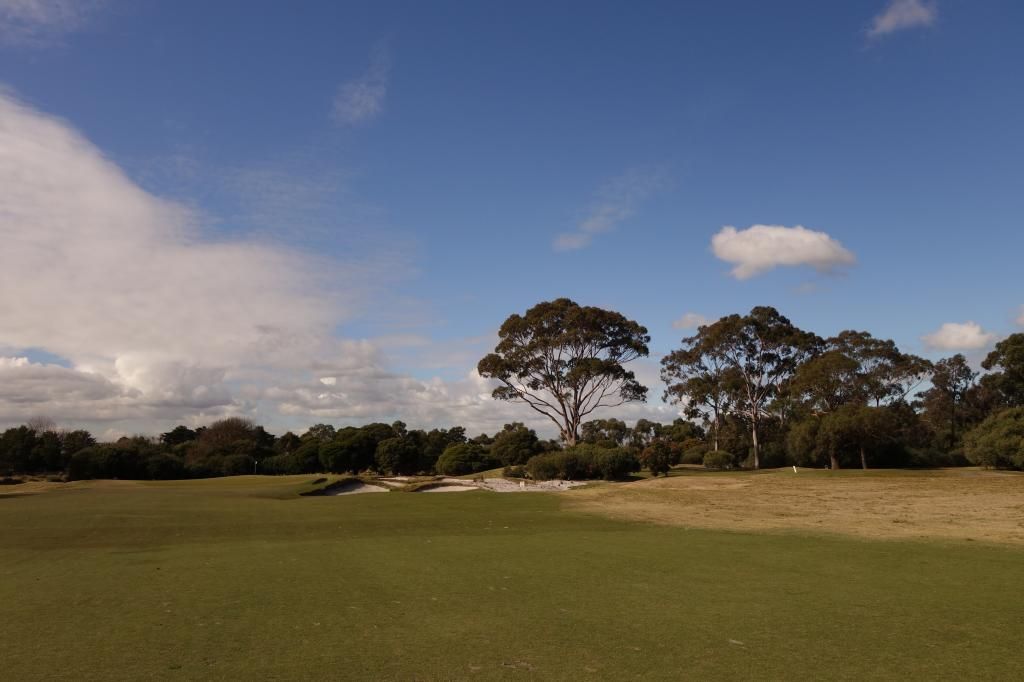
Hole 19 (Tee) (Not a bad "backup" hole)
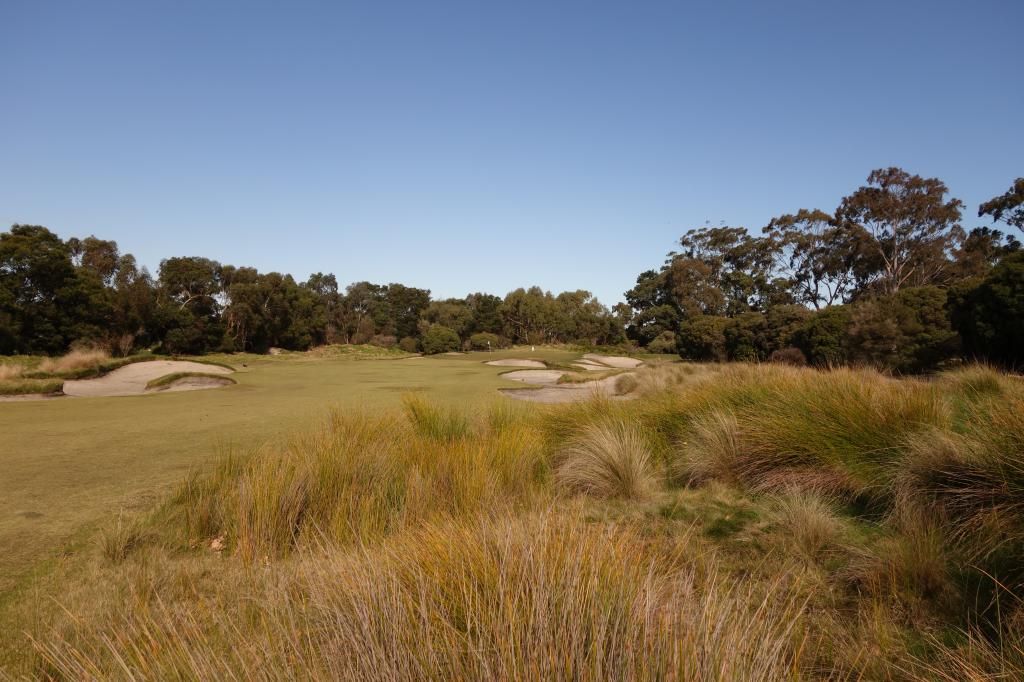
Hole 2 (Fairway) (The green is left after a sharp turn in the fairway; the hole needs some more length to play to its true potential)
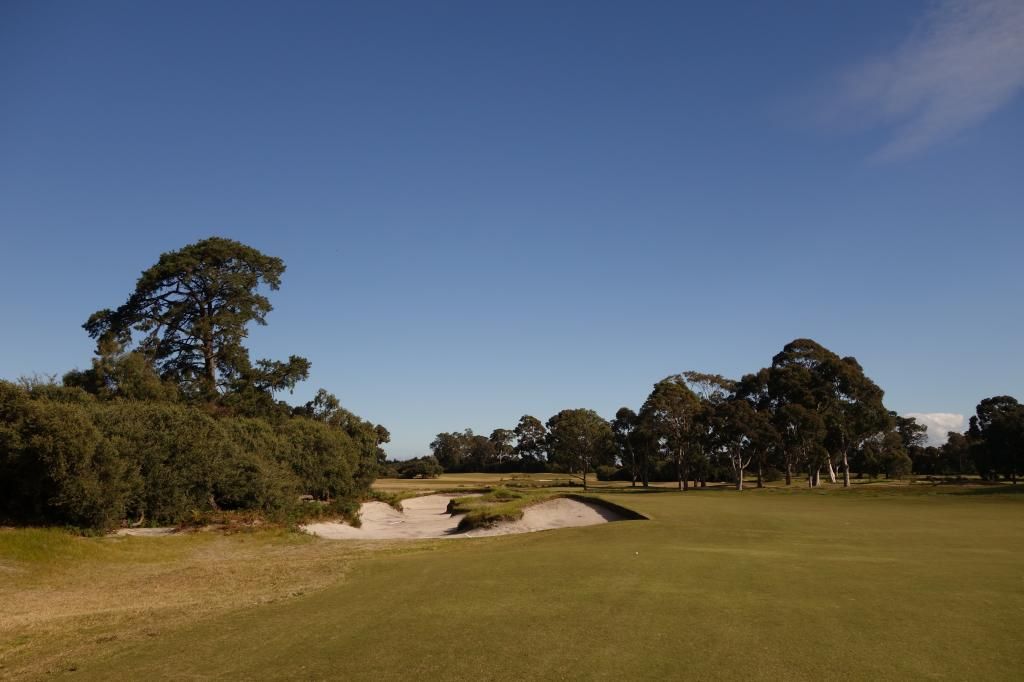
Hole 2 (Left Fairway Bunkers, Green in Distance)
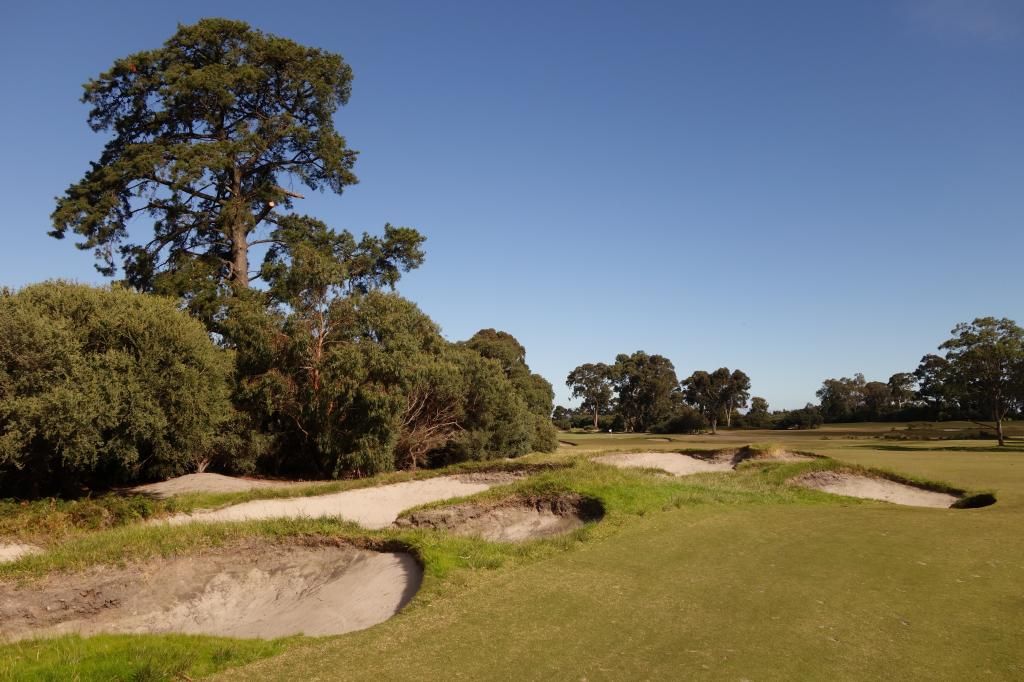
Hole 3 (Tee) (N.B.: I'm not sure I can think of a world-class hole with such an uninspiring tee shot, a mid-long iron to a bland, undefined wide fairway; the green is the saving grace of this hole)
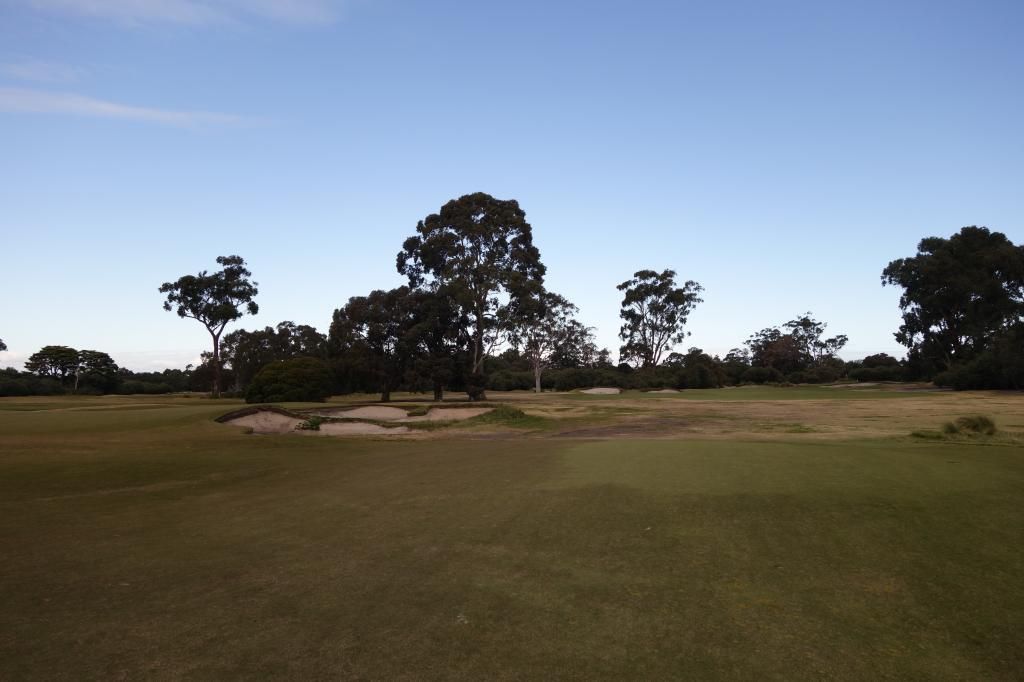
Hole 5 (Tee) (It might look a bit like the 10th, but the 5th green is far wider and more forgiving)
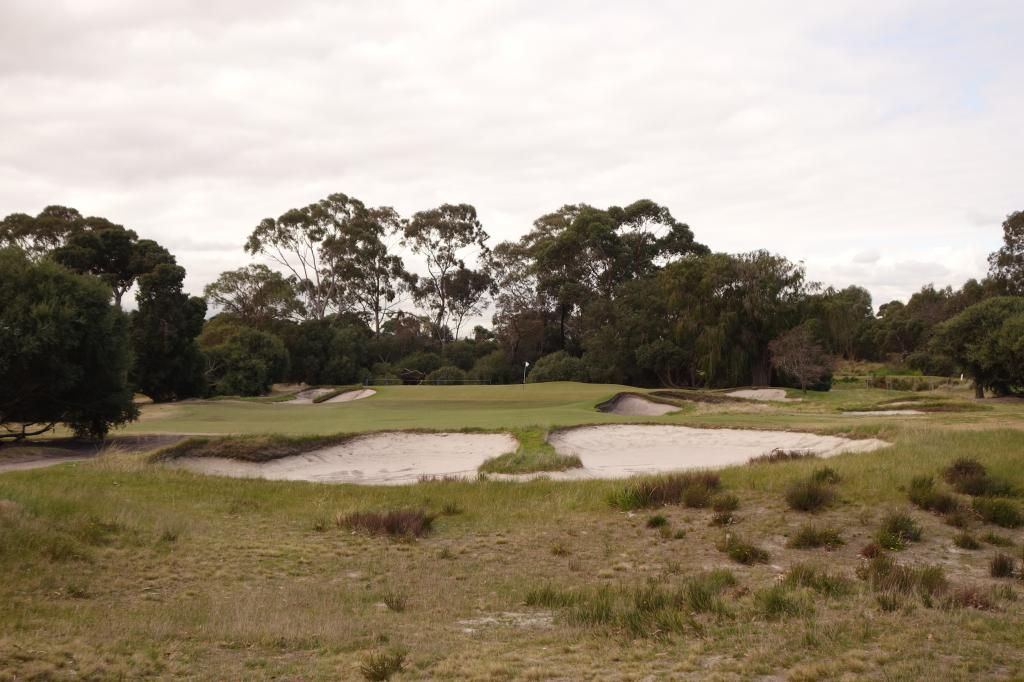
Hole 6 (Right Fairway Bunkers) (Note that the ridge over which the bunkers are draped extends right across the 1st fairway, creating the blindness of that hole's tee shot)
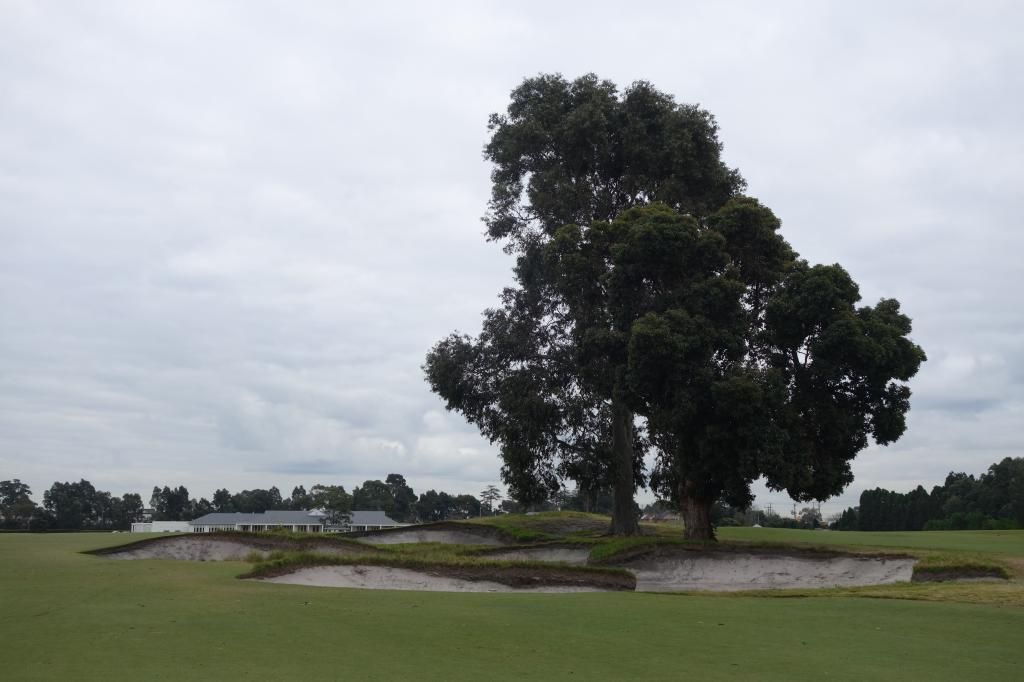
Hole 6 (Right Greenside Bunkers, with Clubhouse)
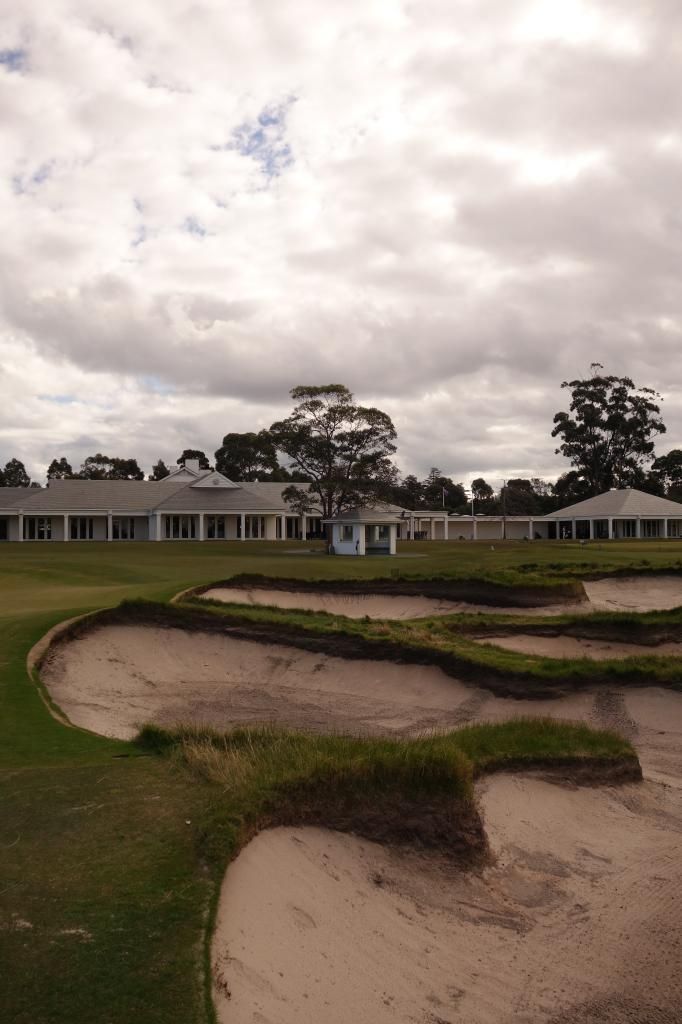
Hole 6 (Looking Backward from Behind the Green)
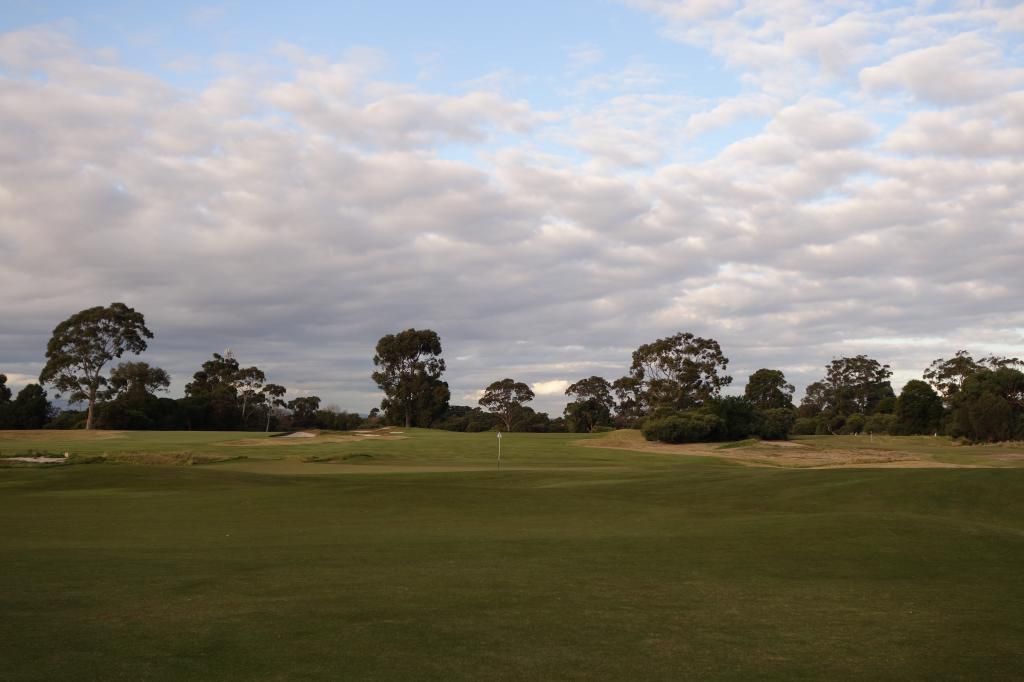
Hole 7 (Tee)

Hole 7 (Fairway) (One of the more pleasing-looking approach shots/green complexes on the course)
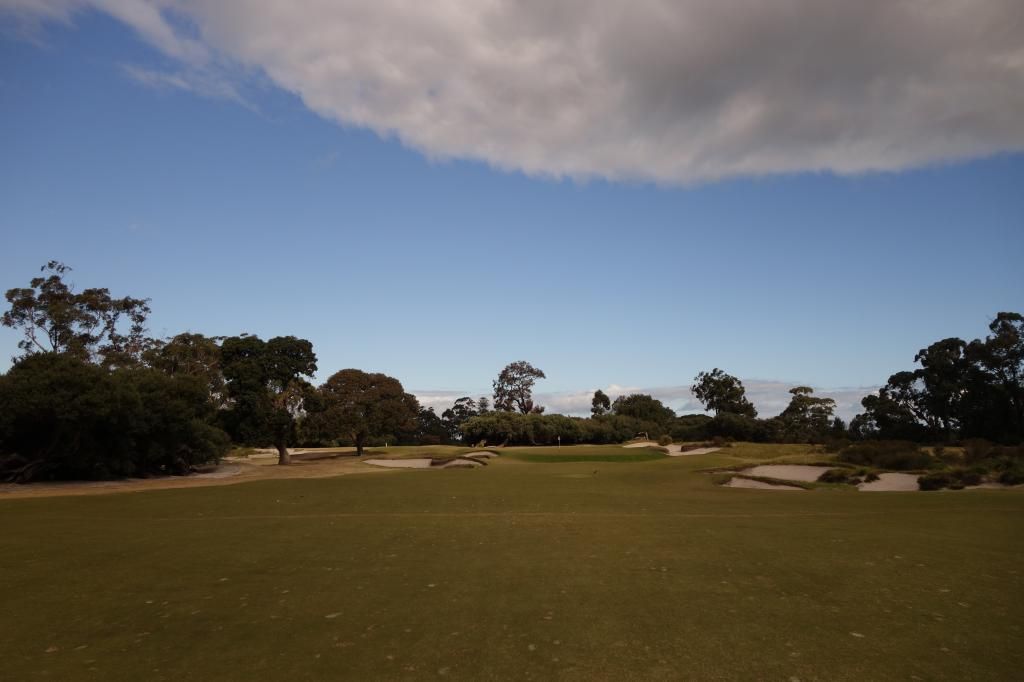
Hole 7 (Green) (A great green complex for a par-5, not unlike the 2nd at Royal Melbourne (West))
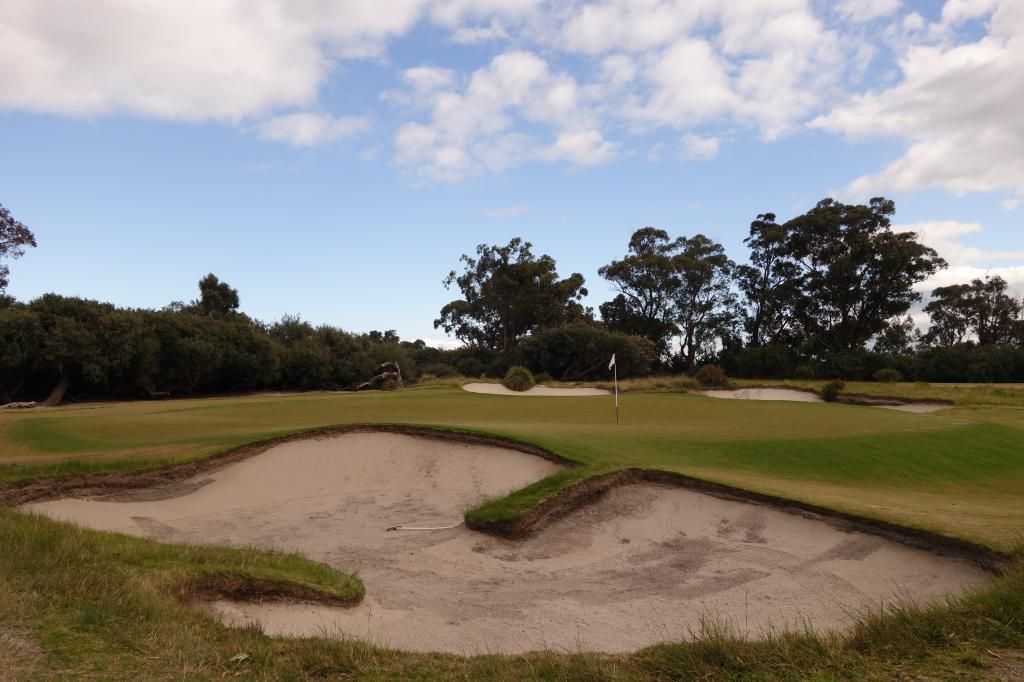
Hole 8 (Fairway, Looking Backward, with the 17th Fairway on the Left)
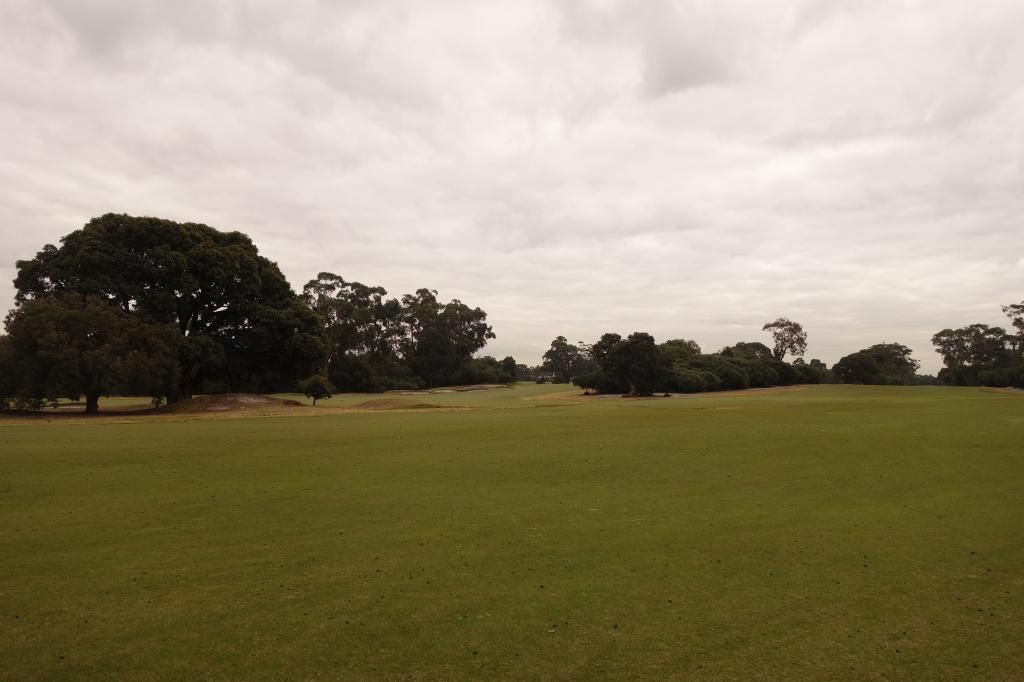
Hole 9 (Fairway)
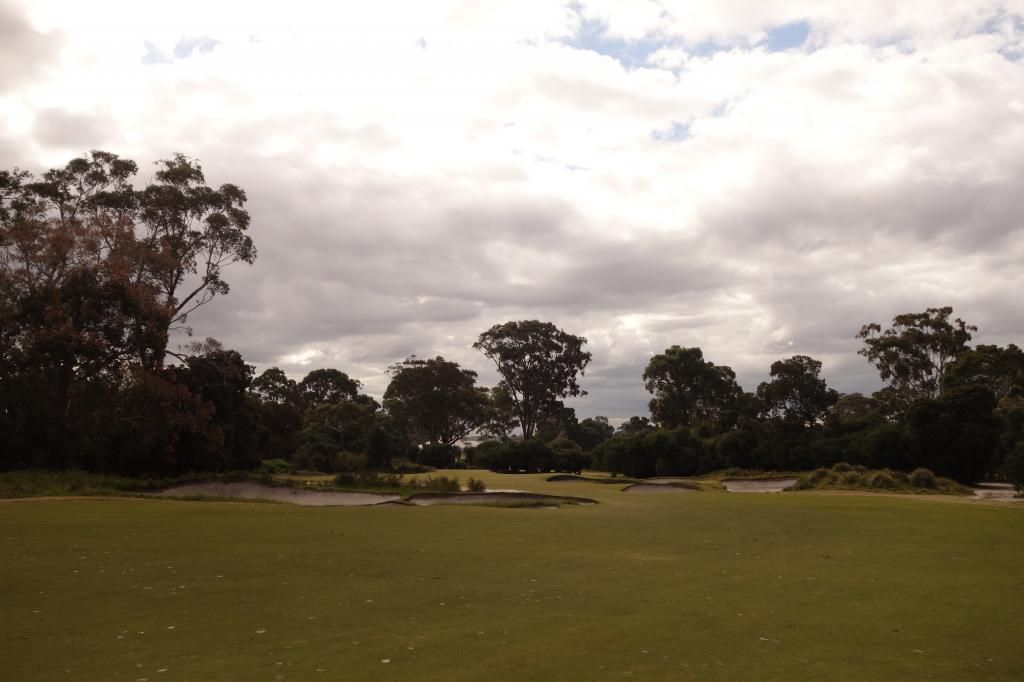
Hole 9 (Green, Looking Backward up the Fairway)
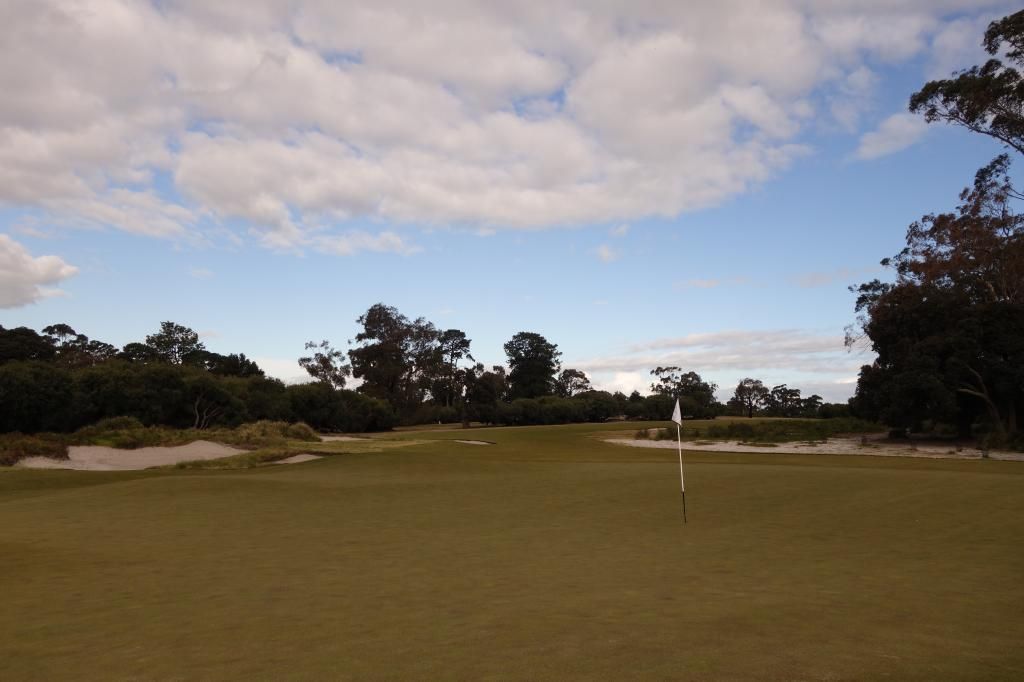
Hole 10 (Tee) (For a flat course, Kingston has eye-candy galore, none more appealing than the tee shot at the short 10th)
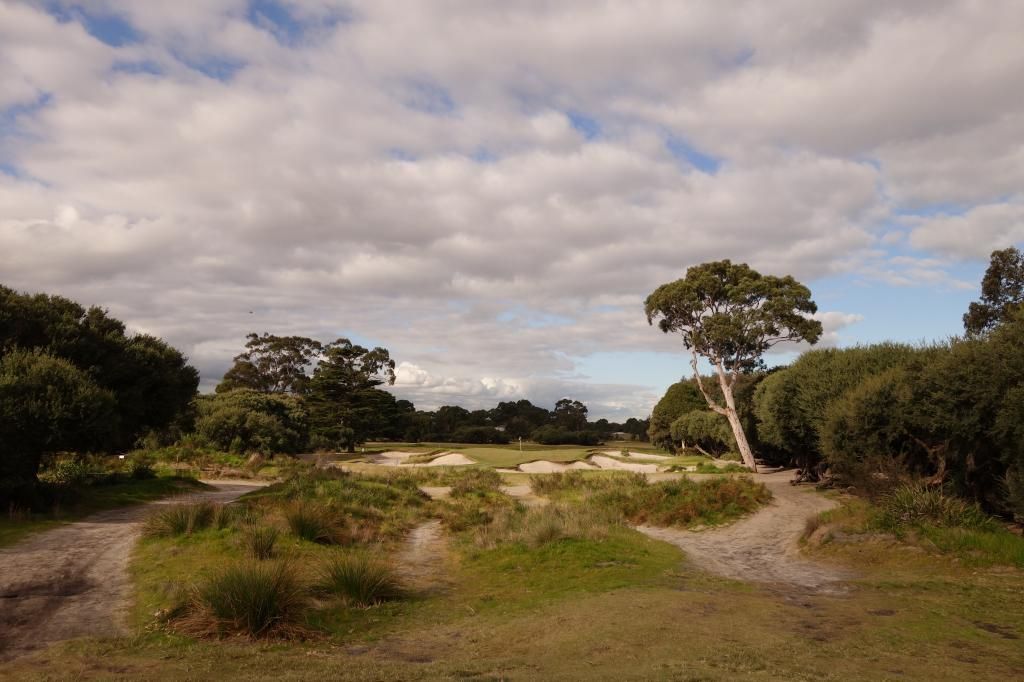
Hole 12 (Center Fairway Bunkers)

Hole 12 (Right Greenside Bunkers, Looking Backward with Hole 13 to the Left)
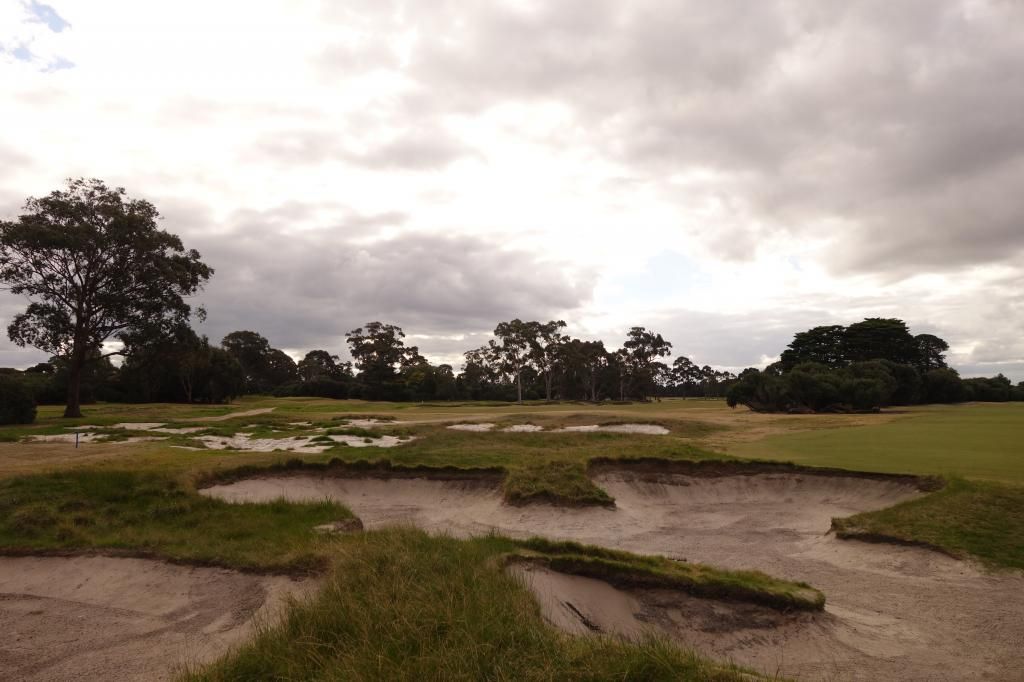
Hole 13 (Left Fairway Bunker, Looking Backward across the 14th Fairway)
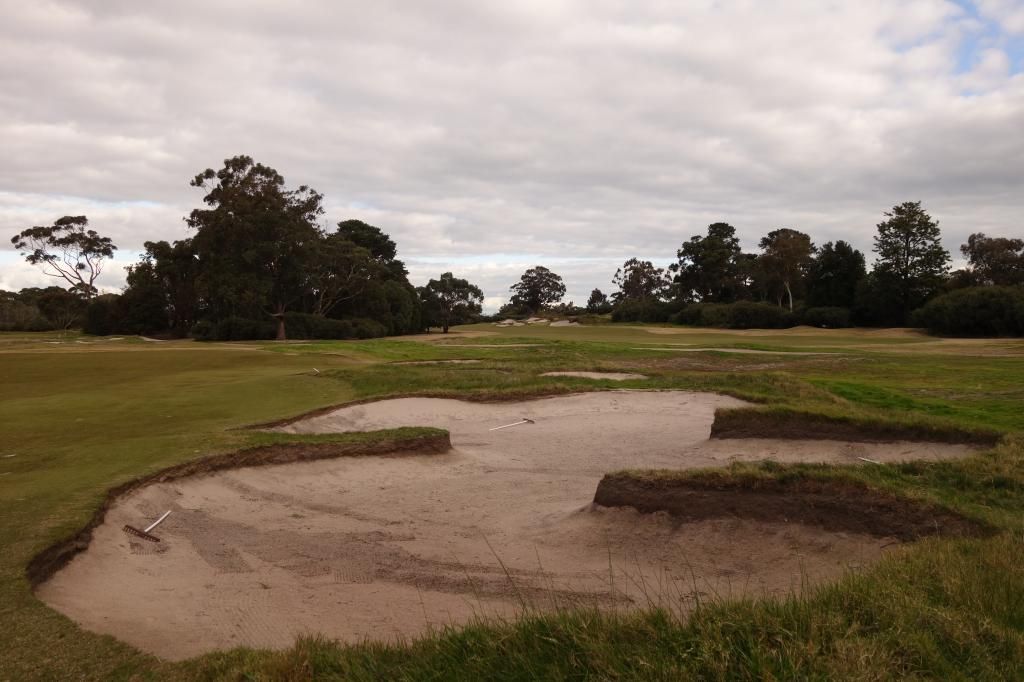
Hole 14 (Tee) (A great par-5 that gradually winds, and narrows, uphill to a blind green)

Hole 14 (Right Fairway Bunkers)
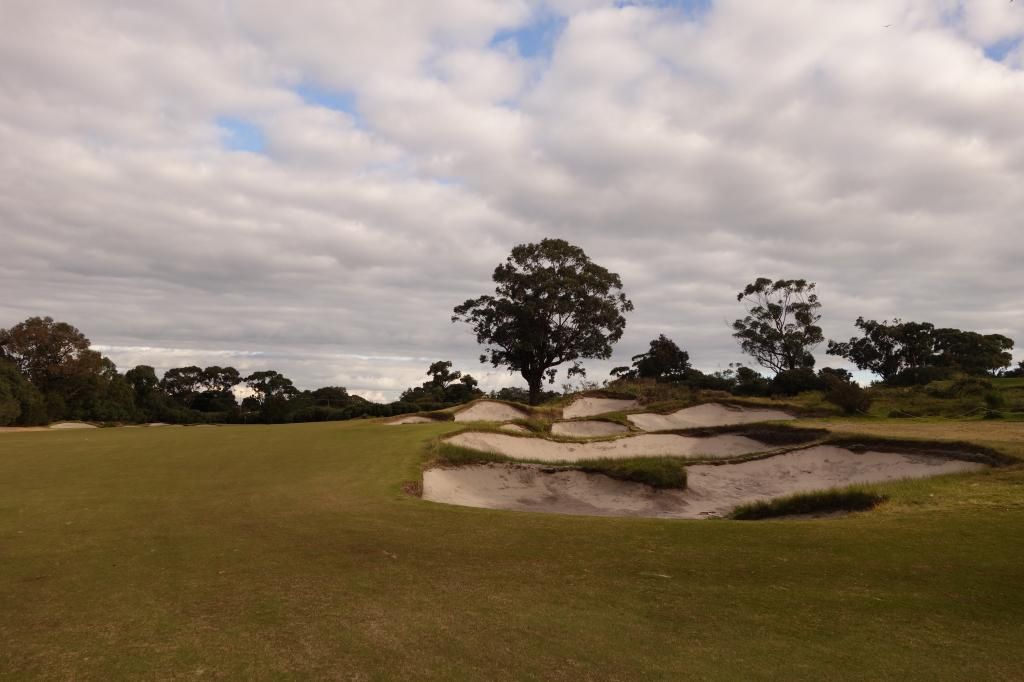
Hole 14 (Left Fairway Bunkers)
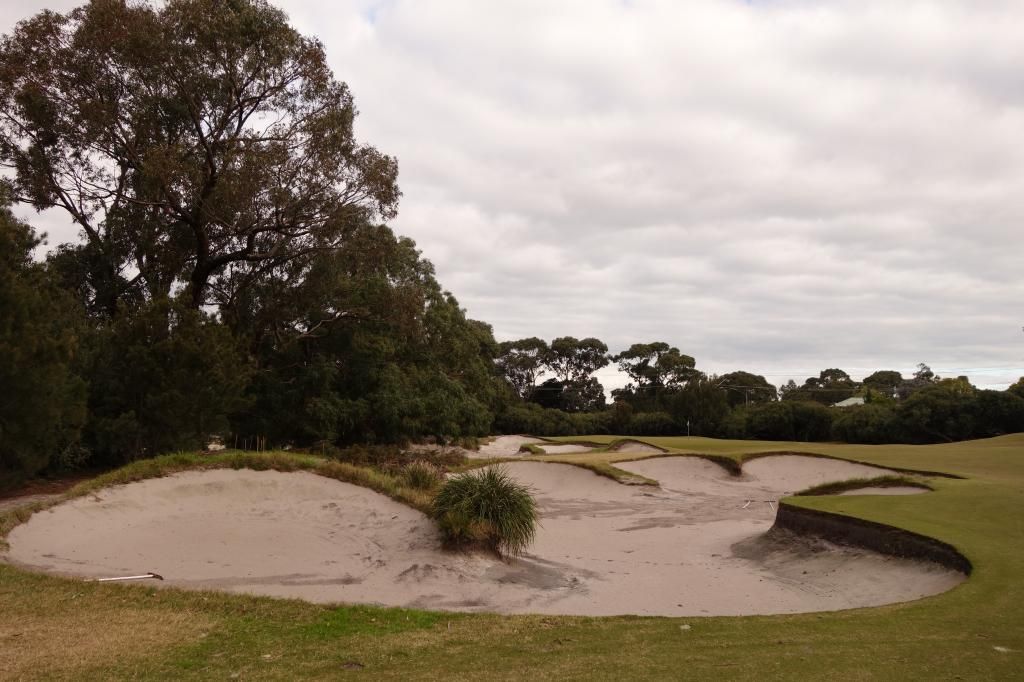
Hole 15 (Tee)
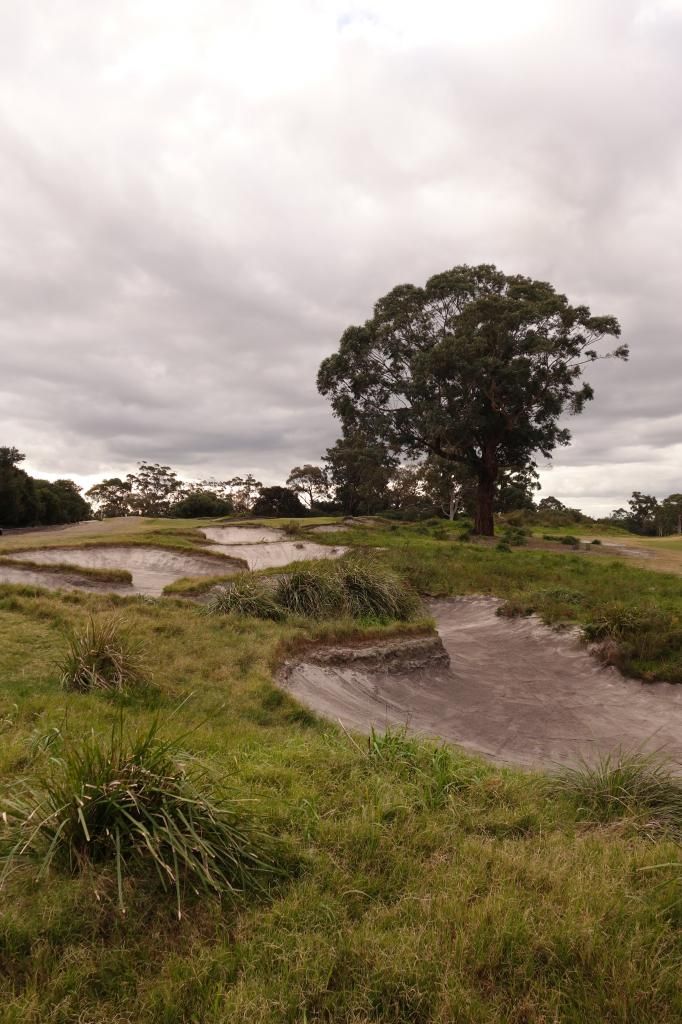
Hole 16 (Fairway, Right Fairway Bunkers) (This is after a blind, uphill sharp-dogleg-right tee shot)

Hole 16 (Right Greenside Bunkers, with Hole 8 in the background)
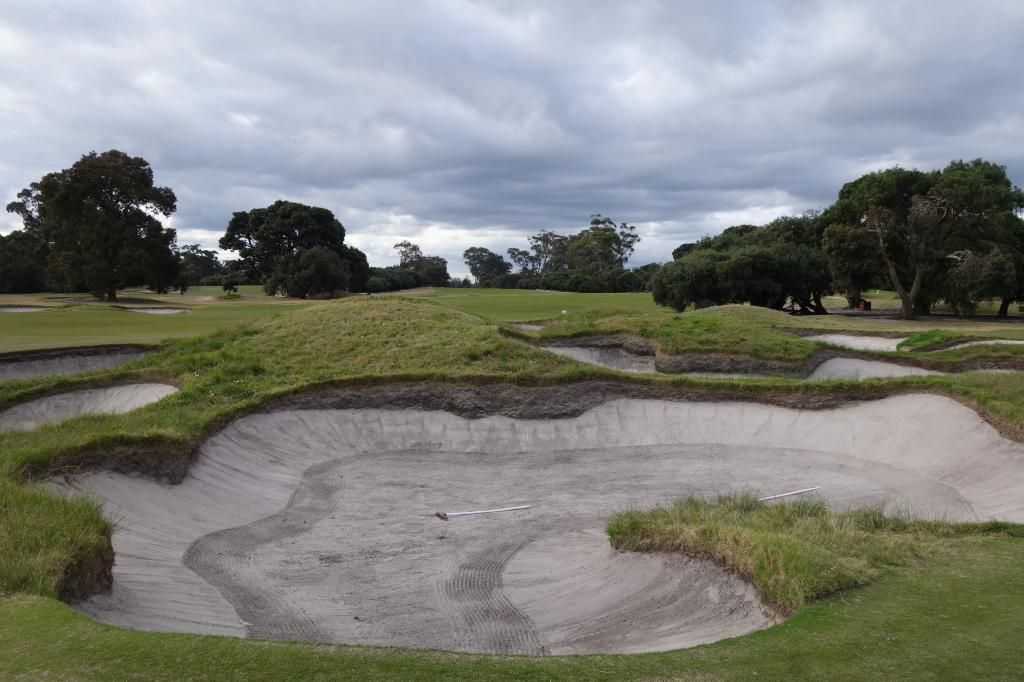
Hole 16 (Looking Backward from Behind the Green)
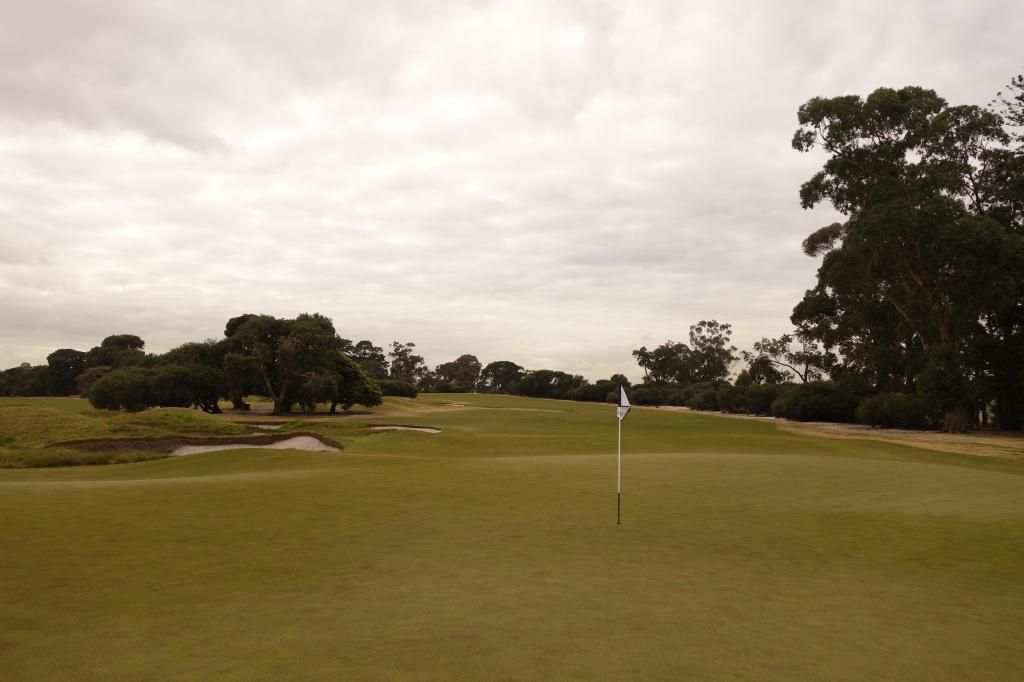
Hole 17 (Tee)
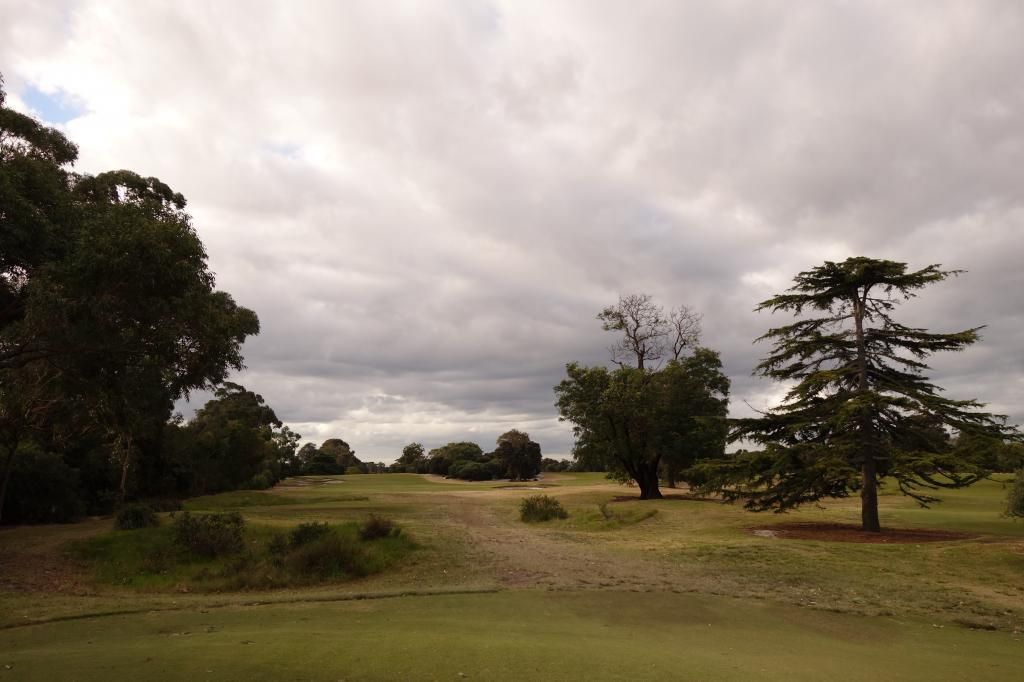
Hole 17 (Fairway) (One of the most beautiful, peaceful spots on any golf course I have ever played)
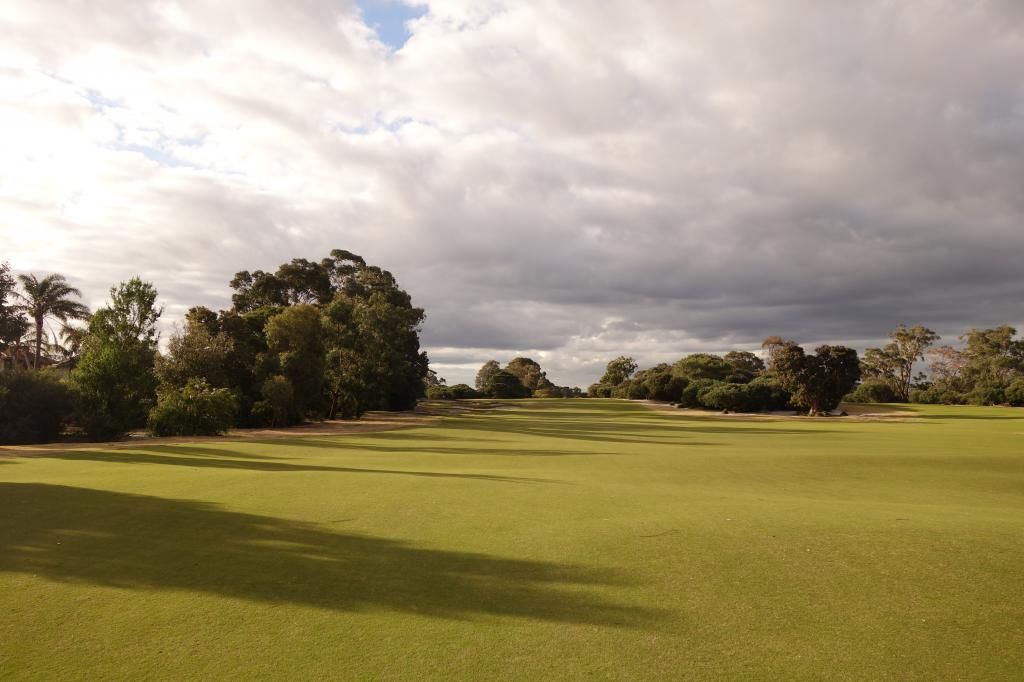
Hole 17 (Right Fairway Bunker)
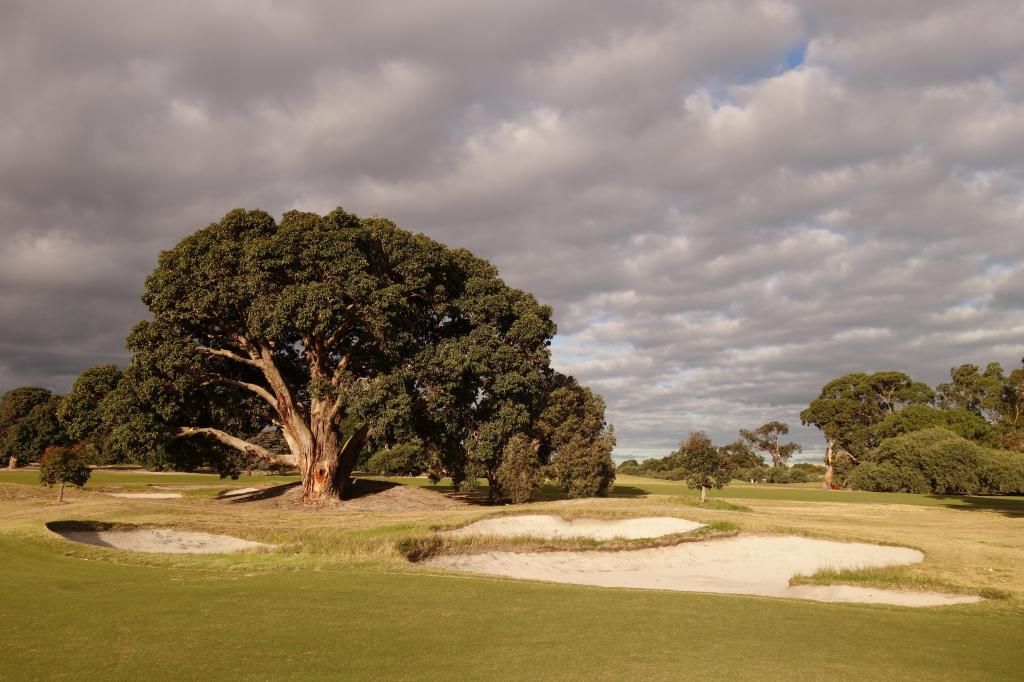
Hole 17 (Left Fairway Bunkers)

Hole 18 (Fairway)
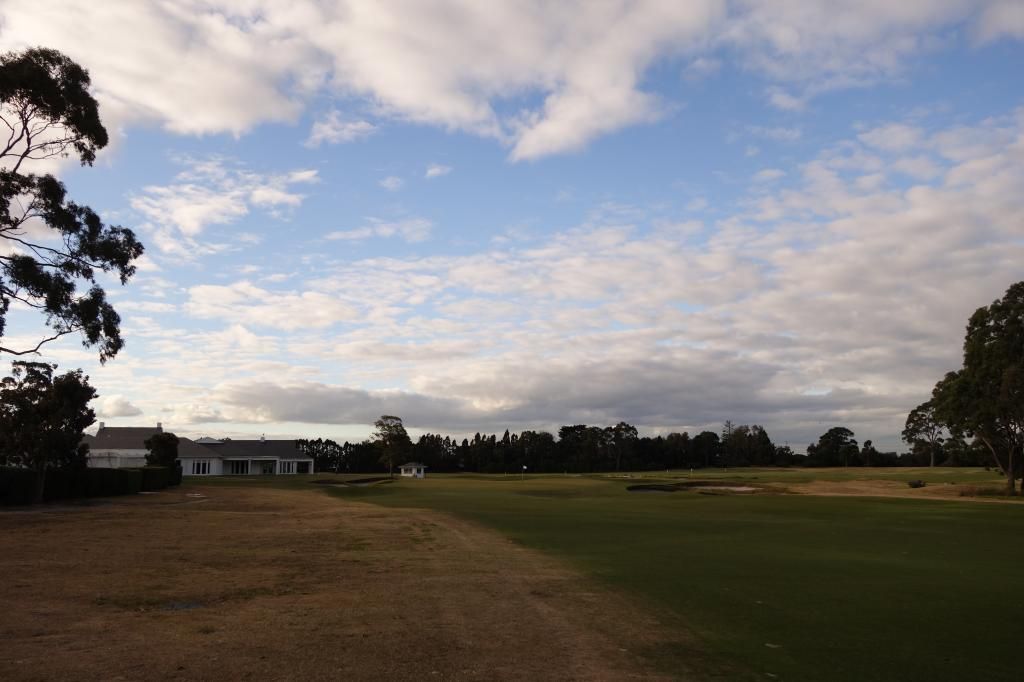
Hole 18 (Left Greenside Bunker, with Clubhouse)

Hole 18 (Left Greenside Bunker, with Clubhouse)
